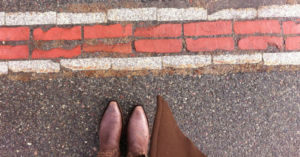Cheyne-Stokes Breathing: What’s the Deal with the Rhythmic Breathing?
3 min read
Cheyne-Stokes Breathing: What’s the Deal with the Rhythmic Breathing?
You know how we all take breathing for granted? Inhale, exhale, repeat, right? Well, our bodies generally do a pretty good job at managing that without us even thinking about it. But then there are times when breathing decides to go all freestyle, like it’s trying to win a talent show. Enter Cheyne-Stokes breathing.
So, What Exactly is Cheyne-Stokes Breathing?
Imagine you’re in a room, and someone is playing with a dimmer switch on a light. It goes bright, then dim, then bright again, in a smooth rhythm. Cheyne-Stokes breathing is a bit like that, but with your breath. It’s a type of breathing pattern that’s all about highs and lows. You start with shallow breaths that gradually get deeper, reaching a peak, and then they start getting shallow again before pausing altogether. And repeat.
This breathing pattern usually happens during sleep, which is great because who doesn’t want their body to start acting up when they’re supposed to be resting?
Why Does This Happen?
Good question! Cheyne-Stokes breathing can be linked to a few different conditions. The most common culprits are heart failure and strokes, where the brain and the heart decide they’re not on speaking terms. The brain, which usually regulates breathing, sends mixed signals because it’s not getting the right amount of oxygen. So, it tells your lungs to breathe faster and deeper. But then it goes, “Whoa, slow down!” and the breathing decreases, eventually stopping for a brief moment.
Think of it as the brain’s way of playing a game of “I’m not sure what I’m doing, so let’s just try everything!” It’s a little like someone trying to decide between binge-watching a show or going to bed early, but doing both simultaneously.
Is It Dangerous?
Well, it’s not ideal. If Cheyne-Stokes breathing was a contestant on a reality TV show, it would probably get the “Most Likely to Be Dramatic” award. It’s often a sign that something else is going on, like underlying heart or brain issues, which need attention. It can lead to disrupted sleep, making you feel like a zombie the next day—not the cool, TV kind of zombie, but the “I need five cups of coffee to function” kind.
Can You Do Something About It?
Absolutely! First things first, if you notice this breathing pattern, don’t just shrug it off. See a doctor. They might suggest lifestyle changes, medications, or even devices like CPAP machines (Continuous Positive Airway Pressure). You know, those cool-looking masks that make you feel like you’re in a sci-fi movie every time you go to bed.
Lifestyle changes can include things like exercising regularly, eating a balanced diet, and avoiding heavy meals before bed—basically, everything your mom has been telling you for years. Turns out, moms are usually right. Who knew?
A Bit of Humor to Lighten the Mood
Imagine if Cheyne-Stokes breathing were a person at a party. They’d be that one friend who can’t decide if they want to leave early or stay until 3 a.m., so they keep walking to the door and then back to the dance floor. Or think of it as the breathing equivalent of those annoying YouTube videos that buffer just when you’re getting to the good part. Annoying, right?
Wrapping It Up
In the grand scheme of things, Cheyne-Stokes breathing is just another way our bodies keep us on our toes. It’s like that plot twist in a movie that you didn’t see coming. But like any good story, it’s always better when you know what’s going on. So, if you or someone you know starts breathing like they’re auditioning for a new role in a mystery drama, it’s time to check in with a healthcare professional.
And remember, while breathing should be a simple task, life’s got a way of keeping things interesting. Sometimes all we need is a good laugh, a good sleep, and maybe, just maybe, a good CPAP machine.




